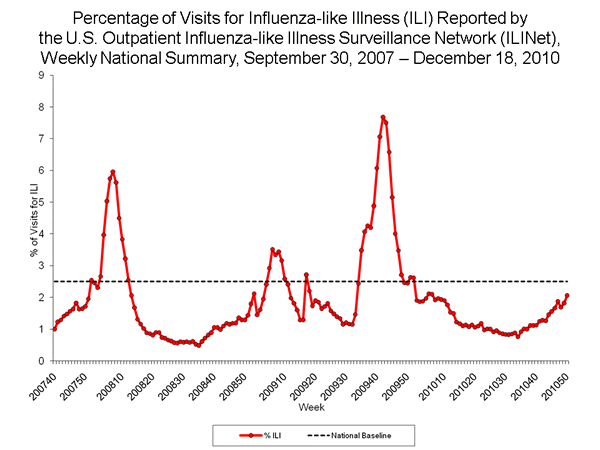
Aside from last year’s swine flu pandemic, a state health official said this year’s flu season has been the worst across Pennsylvania in the past six years.
While the number of confirmed flu cases have dropped significantly when compared to last flu season, the number of flu-like deaths and hospitalizations have increased, said Holli Senior, spokeswoman with the state Health Department.
“Compared to the last six (flu) seasons, this flu season was not mild,” said Senior.
The swine flu pandemic swept through the state last year and caused the number of confirmed flu cases to soar to numbers that aren’t suitable for year-to-year comparisons, local health officials said.
So far this season, 280 flu cases have been confirmed in York County, compared to last year’s 666 cases. one of the confirmed flu cases this year resulted in death, while four people died from flu-related illnesses last year.
Across the state, there have been about 15,000 fewer confirmed cases of the flu this flu season, but nearly 100 more hospitalizations and six more deaths than last season.
The state statistics show about one-third of the confirmed flu cases were to unvaccinated individuals.
And more than half of all flu deaths and hospital admissions occurred in individuals who didn’t receive a flu shot this season, according to the statistics.
The height of flu season is considered to occur between October to March, said Senior.
The state typically records the most flu activity between December and March, she said, meaning the brunt of flu activity this season has passed.
Average year: Meanwhile, flu activity at York City’s Bureau of Health has been pretty average this year, said Deb Stoops, immunization coordinator of the bureau.
Stoops credits the lower number of flu cases in York
this flu season to more people getting vaccinated.
“After last year, flu shots were available for people everywhere this year, including Walgreens, Rite Aid and CVS,” she said.
People who got severely sick from the flu this year were often those who opted out of the flu vaccination, she said, noting the importance of the vaccine.
The city’s health department distributed about 3,100 flu vaccines this year, she said.
But that’s nothing compared to the 10,500 that were distributed to senior centers, schools and residents last year in anticipation of the H1N1 flu virus, she said.
Stoops also said the health bureau gave city residents Tamiflu during this year’s season, which most likely contributed to lower flu cases this year.
The medication is used to treat some types of flu in adults and children older than 1 who experience early symptoms of the flu.
The city’s health department stopped distributing flu vaccinations at the end of March, said Stoops.
– Reach Lauren Whetzel at 505-5432.